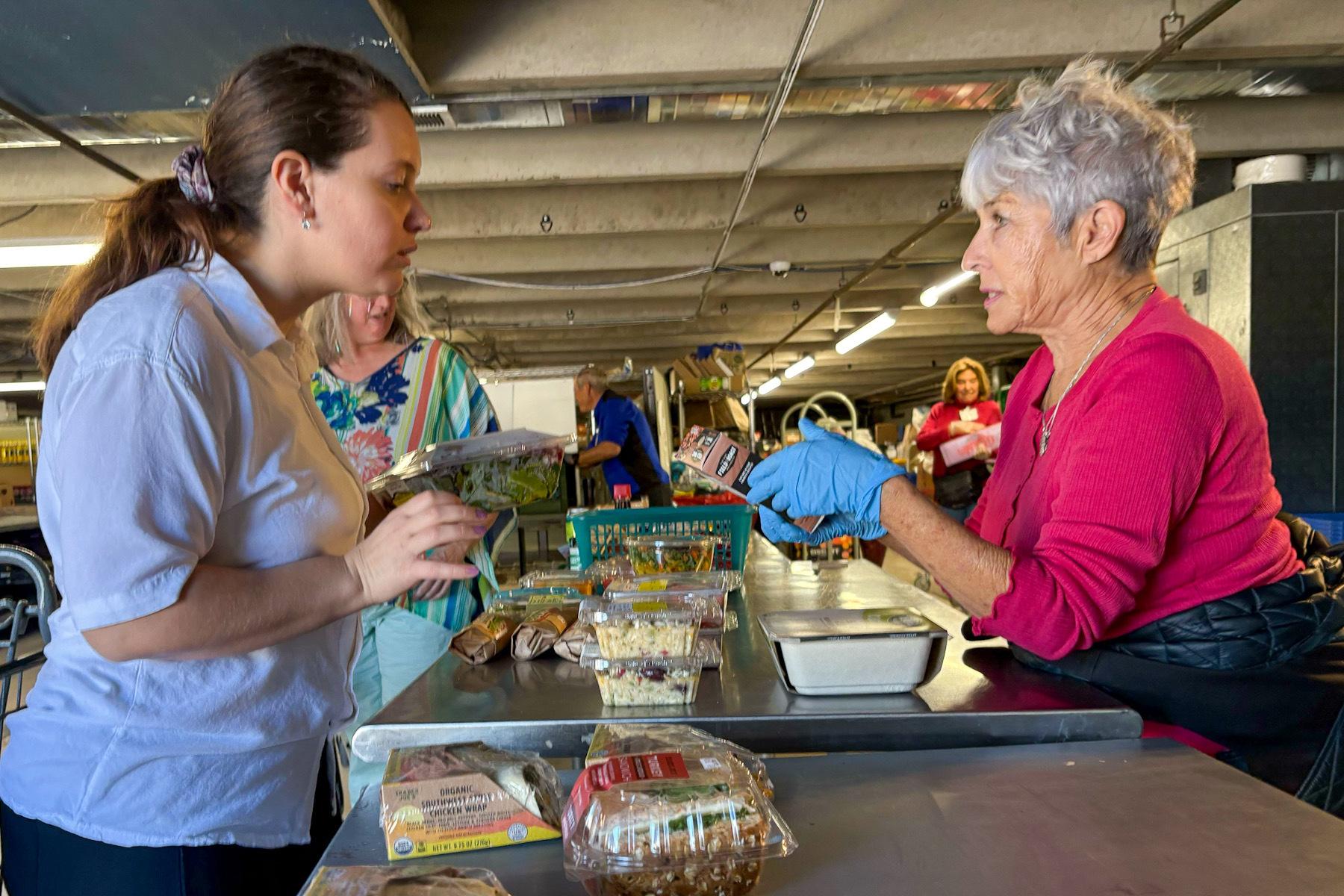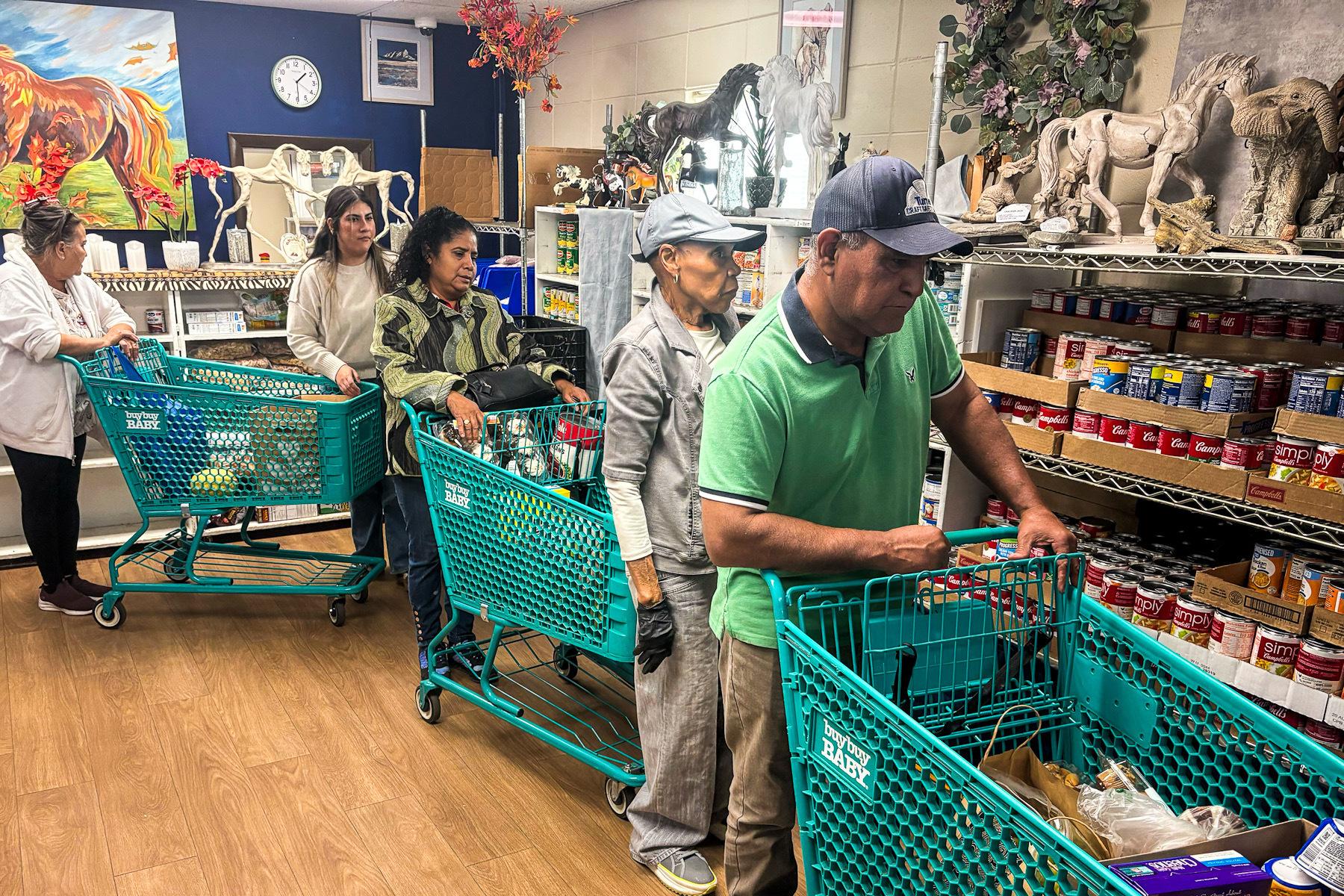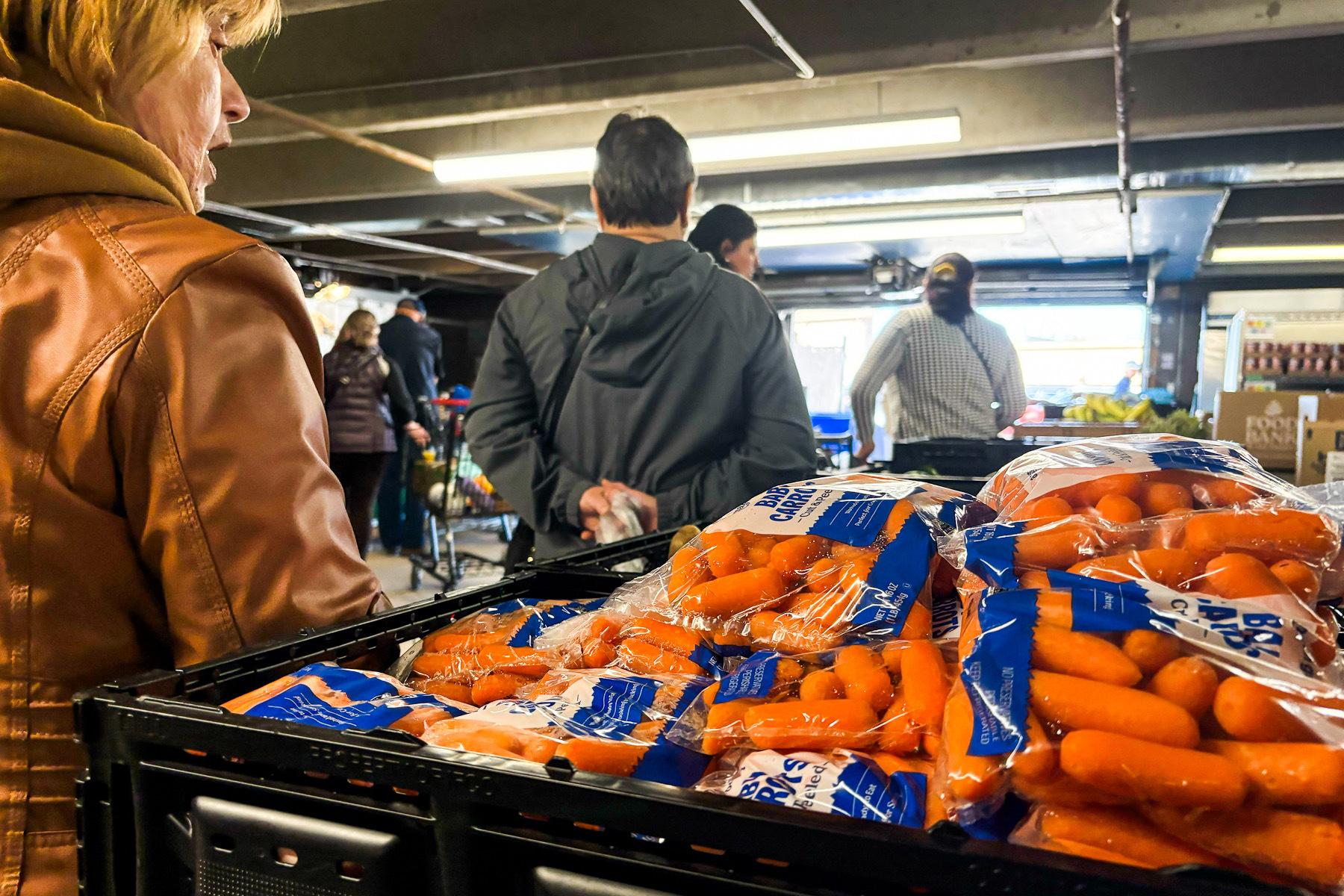
Updated at 3:22 p.m. on Thursday, Nov. 6, 2025.
Rodney Sneed visits the Community Ministry Food Pantry once a month for basic groceries. He’ll typically push a teal grocery cart into a small room full of canned goods, meat, and vegetables. When the 65-year-old leaves, the cart is normally full with enough food to last a week. Just a week. He’ll go on to visit other pantries to make up the difference for the month.
Like many, Sneed uses the federal government’s Supplemental Nutrition Assistance Program (SNAP), often referred to as food stamps, to purchase groceries from the pantry. So, when the U.S. Department of Agriculture announced it would not pay SNAP benefits in November, he wasn’t sure what to do.
“I didn't think we was going to get any until last week when they said that two judges told Trump to keep the SNAP benefits going,” Sneed said. “But, we won't be getting the full amount.”
The program has been plagued by confusion during the shutdown. Last week, a court ordered the Trump administration to continue payments, calling the refusal to tap into an emergency fund during the shutdown unlawful. The USDA told a judge Monday they’d give recipients about half their usual amount but warned the process could take months. The administration said there’s only $4.65 billion available in the contingency fund. The USDA typically pays about $8.6 billion in benefits per month. According to court documents, there will be no funds available for new SNAP applicants certified in November.
Then, on election day, Trump declared no payments would go out until the shutdown was over; the White House then walked that back, saying they’d follow the court ruling. By Thursday the USDA said SNAP recipients would receive 65% of their typical payment; then a court ordered the Trump Administration to make full payments.
The payment freeze and uncertainty has left 42 million people across the country in the lurch, including the elderly, disabled, and 16 million children. Of those, about 600,000 are in Colorado, making up about 330,000 households. About half are children, and 10 percent are elderly. Like Sneed, many of them are now relying more on food banks.
Officials at Community Ministry Food Pantry told CPR News they usually saw between 40 and 60 families a day before SNAP benefits were in flux. Now, they are seeing 80 to 100 families a day.
“We were worried enough that we went and purchased a bunch of extra food this last week,” Joyce Neufeld, executive director of the pantry, said. “We went and bought a bunch of fresh produce too, and we've been buying more meat.”
Most of the food that goes through food banks comes through donations from various organizations. The pantries also purchase from grocery stores at a discount and order food from larger groups like the Food Bank of the Rockies. Typically, the Community Ministry Food Pantry spends $2,000 a week on food orders. This week, they spent $7000.
“We will do it as long as we can, but it's not sustainable,” Neufeld said.

Juan Flores is an employee of the Community Ministry. Along with SNAP, he receives additional benefits for working at the pantry. He says that’s been crucial now that he and his daughter have seen SNAP benefits disappear.
“Her (SNAP) amount got cut to below half, and for me, it's $292 a month. I was down to $118 the last time,” Flores said. “So, if it wasn't because I work here or I help here, yeah, I wouldn't be able to make ends meet.”
Flores said he had to cut back on what he could buy from a regular grocery store, focusing on what’s necessary and hoping to find other items at the pantry.
“Let's say some fruit comes along, I might grab some of that — strawberries, bananas, stuff like that,” Flores said. “But if it wasn't for that, and if they wouldn't allow me to do that, I would have to pay for it. Yeah, I'm going to be in trouble; $118 doesn't get too much.”

Many people on SNAP, like Thomas and Tamara Solano, don’t have the same options as Flores.
“We’re coming over here for the food,” said Thomas Solano as he and Tamara sat in the lobby of Jewish Family Services of Colorado and waited for a text notification to go into the food pantry. The couple lives off Thomas’ retirement and social security. They said SNAP helped them juggle rent and medical bills. “So, I hope (they fix it). They’re supposed to be reopening, reloaded the system. That's what they said.”
Officials at Jewish Family Services of Colorado had similar reactions when asked about the announcement. The organization serves more than 10,000 registered clients plus walk-ins. CEO Linda Foster told CPR News they were seeing 130 to 150 households daily since Covid. Now, they are planning for between 150 and 200 families a day. They have extended their hours as a result. And Foster said that they’ve been getting hundreds of calls from people asking for help.
“I know that we're going to get pallets and pallets of produce, extra produce this week,” Foster said. “We're also looking at increasing the amount of protein that we get. Those are the two things we're focused on this week.”

Jewish Family Services was spending roughly $40,000 per month before the SNAP funding delay. Now they expect to spend more than $60,000 a month to help people make ends meet.
“We really understand that it’s not going to do it for so many people. It's still going to leave people with food insecurity,” Foster said. “Even though it's helpful, there's still enough of a gap that we still need to continue along the same path, upping our food amounts, having enough food in our pantries and culturally appropriate foods, and also thinking of ways to help augment even the other gaps of things that we don't have in our pantry.”
Relief, Solutions, and the Holidays
Some Colorado food banks might receive some help this month. The state’s Joint Budget Committee unanimously approved $10 million from Colorado’s reserves to help food banks and assistance programs during the government shutdown.
The $10 million will go to Feeding Colorado, an umbrella organization for five major food banks across the state: Care and Share Food Bank for Southern Colorado, Community Food Share, Food Bank for Larimer County, Food Bank of the Rockies, and Weld Food Bank.
The funding will be dispersed in three equal installments between Nov. 1 and Dec. 1, depending on the length of the federal shutdown.
Through those five organizations, smaller food banks, such as Community Ministry and Jewish Family Services, receive credits on food purchased from them. For example, Community Ministry received just more than $2000 in credits for their $7000 purchase to stock the pantry this week.

Meanwhile, with the holidays looming, food banks are being forced to make adjustments. Neufeld said her pantry is limited in what it can offer for Thanksgiving and Christmas this year. She said Community Ministry will only offer Christmas gifts for 350 kids (instead of the usual 500 to 600 kids) to cut down on costs.
“We're doing 400 Thanksgiving boxes, which we upped from last year because of the need,” she said.
Foster said Jewish Family Services is looking to offer gift cards for the holidays. She said they plan to serve at least 400 families with boxes of food for Thanksgiving and deliver catered meals to those who are homebound, such as older adults or the disabled.
“We're keeping on track with our holiday plans, and we can't add more people for Thanksgiving,” Foster said. “But we'll try to do what we can by giving them food from the pantry during our pantry days.”
Foster said Jewish Family Services is also looking for more volunteers as they prepare for an increase in families at the pantry. The organization will likely continue to increase its food quantity if the loss of SNAP benefits continues. Donors can also help during the Christmas holidays by adopting a family that can’t afford to buy gifts through their Bright Holidays program.
Flores said that the food bank is appreciative of the generosity through donations that they have received.
“That's been helping out quite a bit. Everybody really stepped it up instead of hunkering down,” Flores said. “They're giving, which is kind of nice. There are days when, yeah, it looks like we might not have enough.”
Editor's Note: This story was updated to include the latest court orders.
- Federal judges rules Trump must continue funding SNAP during government shutdown
- Colorado lawmakers approve $10 million to bolster food banks as SNAP benefits dry up
- As SNAP benefits become the next shutdown casualty, Colorado food banks brace for impact
- Empty shelves, growing lines: Colorado food banks adjust to a decrease in supply and an increase in demand









